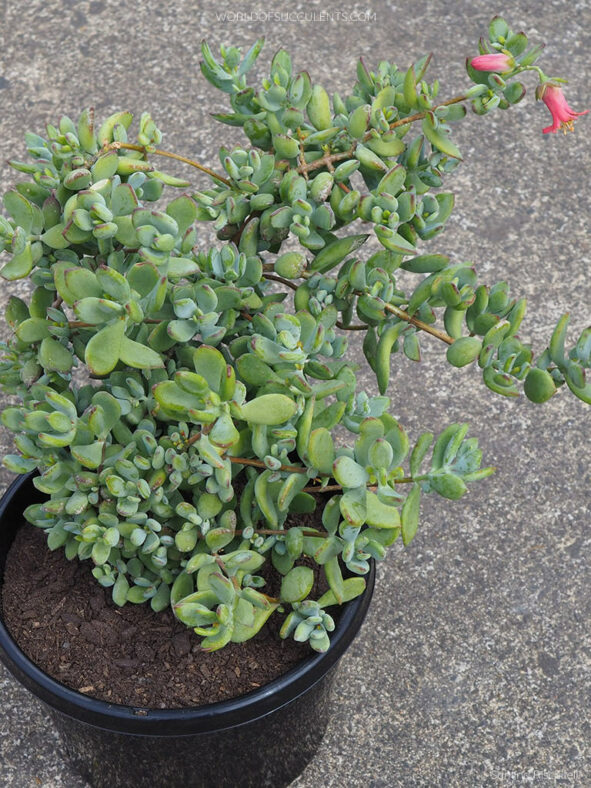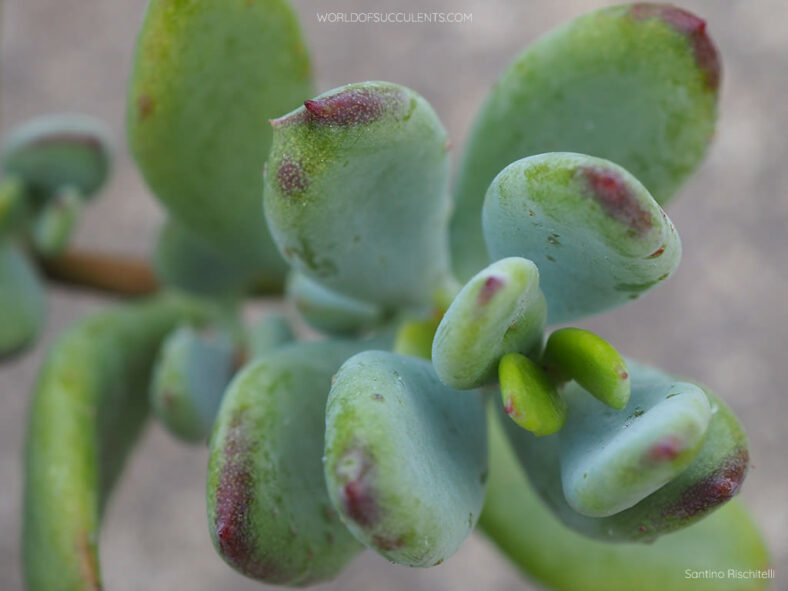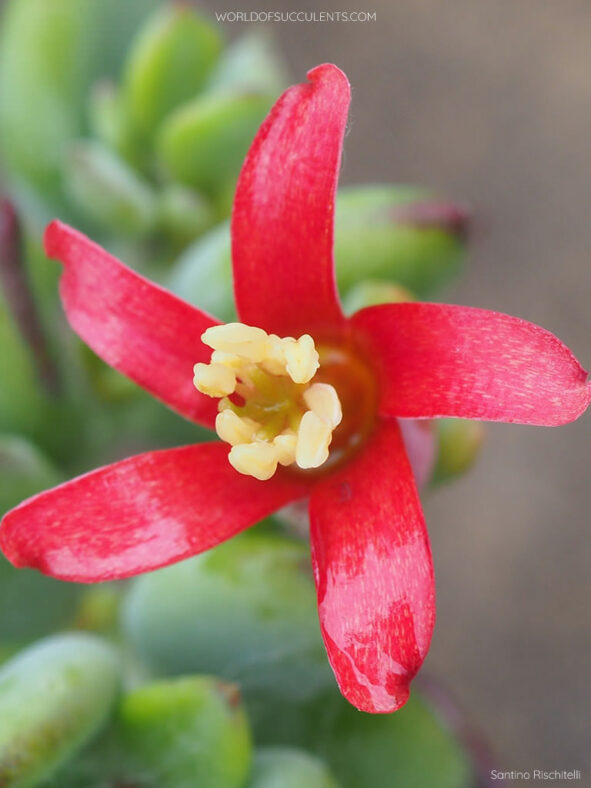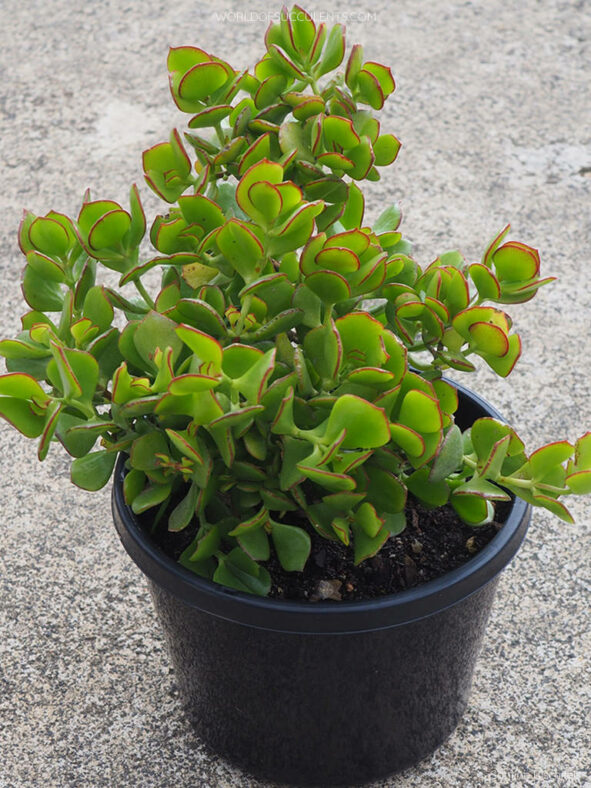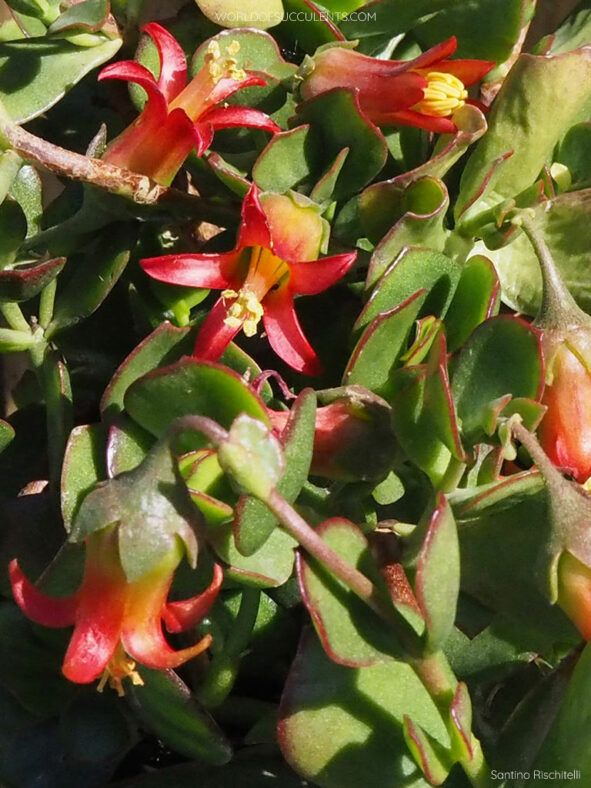Cotyledon woodii is a highly variable species with various forms that can be found in cultivation.
Scientific Name
Cotyledon woodii Schönland & Baker fil.
Common Name(s)
Wood's Cotyledon
Synonym(s)
Cotyledon woodii subsp. woodii
Scientific Classification
Family: Crassulaceae
Subfamily: Kalanchoideae
Genus: Cotyledon
Etymology
The specific epithet "woodii" (pronounced "WOOD-ee-eye") honors John Medley Wood (1827-1915), an English-born South African botanist, curator of the Durban Botanic Garden, and director of the Natal Government Herbarium of South Africa.
Origin
Cotyledon woodii is native to South Africa. It grows in sheltered kloofs or on forest margins, from Ladismith and Riversdale in the Western Cape to Graaff-Reinet in the Eastern Cape, and in the western parts of the former Republic of Transkei.
Description
Cotyledon woodii is a much-branched, succulent shrub with erect branches and fleshy leaves, mostly seen at the tips of the branches. It can grow up to 4 feet (1.2 m) tall. The woody branches are green when young but become brown with peeling bark with age. The leaves are smooth and range from oblanceolate to obovate, measuring up to 1.1 inches (2.7 cm) in length and 0.5 inches (1.2 cm) in width. They are usually deep green or glaucous and sometimes have reddish margins towards the apex.
The flowering season of Cotyledon woodii is mainly in summer and fall. However, deep red to orange flowers can be seen almost at any time of the year. The flowers are bell-shaped with a nearly cylindrical tube and recurved, lance-shaped to oval petals. They appear in groups of up to three just above the leaves on short stalks at branch tips and leaf axils.
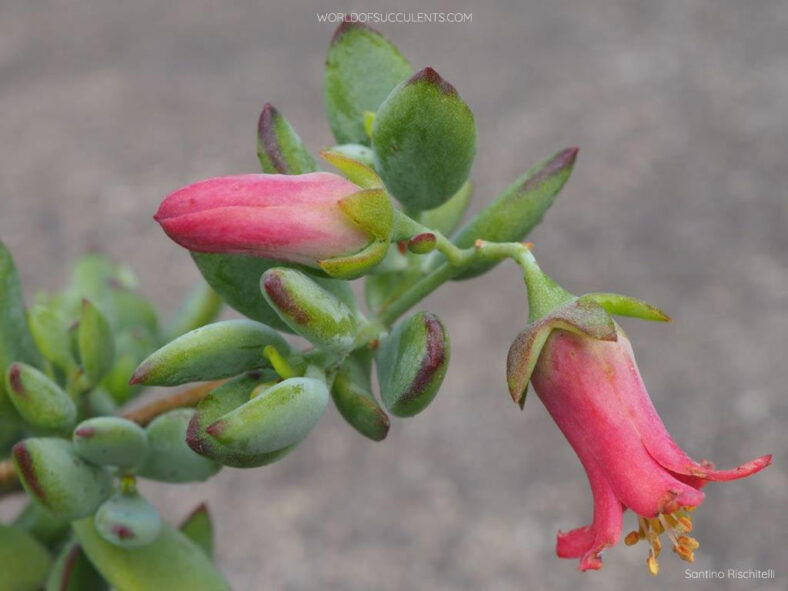
How to Grow and Care for Cotyledon woodii
Light: Cotyledon woodii is a plant that requires ample sunlight to thrive. While it can be somewhat flexible, it grows and blooms at its best when exposed to full sun. If you are growing it Indoors, it is best to keep it near a sunny window or under a grow light.
Soil: To keep your plant healthy, it is essential to use well-draining soil. Overwatering and poor drainage can cause root rot. You can use a commercial soil mix for succulents or make your own.
Temperature: This plant can withstand high temperatures and cool, frost-free conditions during winter, provided it remains dry. Cotyledon woodii grows best in USDA Plant Hardiness Zones 9b to 11b, with average minimum winter temperatures ranging from 25°F to 50°F (-3.9°C to 10°C).
Watering: To properly care for this plant, follow general watering procedures for succulents. During the growing season, water it deeply enough for excess water to flow out through the drainage holes, and then allow the soil to dry out completely before watering again. In the winter, reduce watering.
Fertilizing: To ensure optimum growth, it is recommended to feed your plant with a water-soluble fertilizer, but only during the growing season.
Repotting: It is not necessary to repot this plant frequently. Only repot it when the pot is becoming too small or shallow. Choose a pot with at least one drainage hole at the bottom.
Propagation: To propagate Cotyledon woodii, you can use stem cuttings, mature leaves, or seeds. For best results, take cuttings during the fall. Fall and winter are ideal for sowing if you prefer to start this plant from seeds.
Learn more at How to Grow and Care for Cotyledon.
Toxicity of Cotyledon woodii
Cotyledon woodii is considered toxic. Therefore, it is best to keep it away from children, pets, and livestock.
Links
- Back to genus Cotyledon
- Succupedia: Browse succulents by Scientific Name, Common Name, Genus, Family, USDA Hardiness Zone, Origin, or cacti by Genus
Photo Gallery
Click on a photo to see a larger version.
